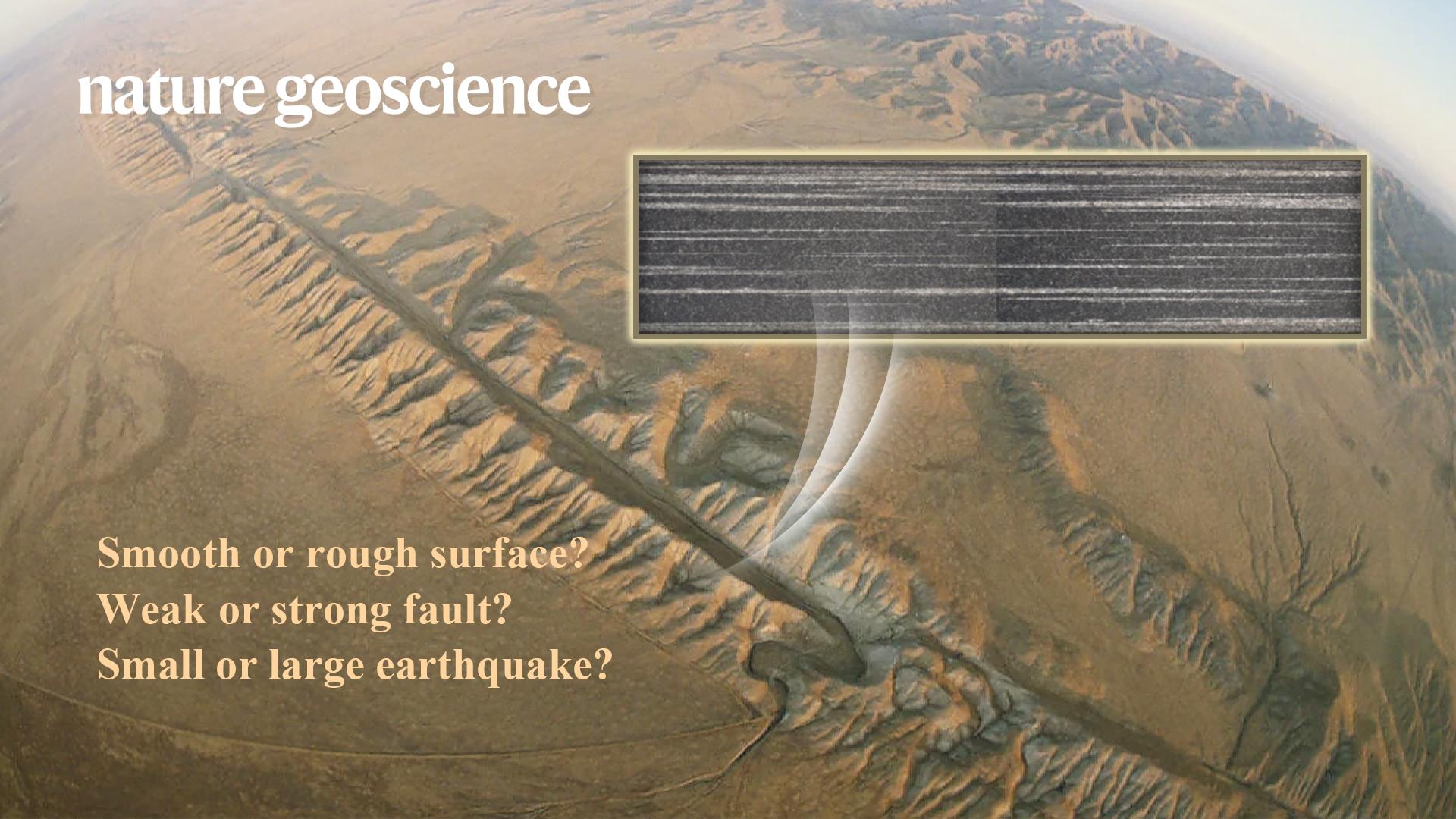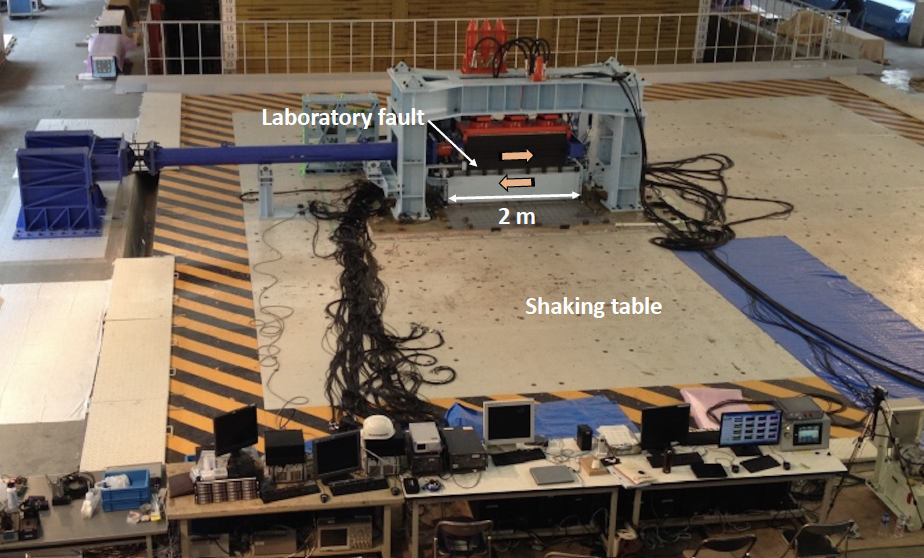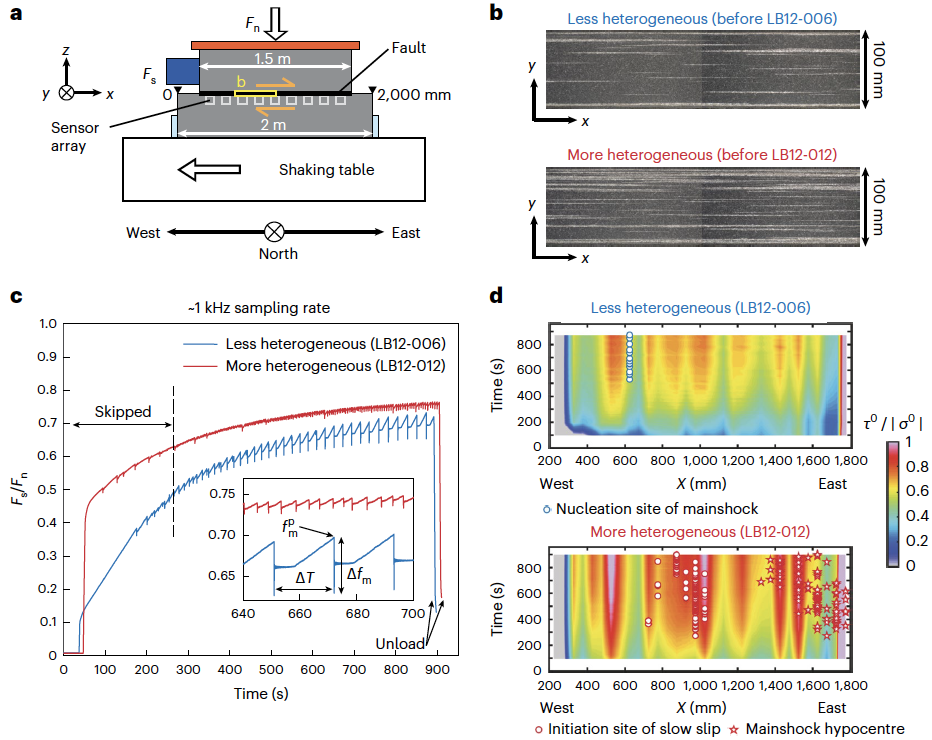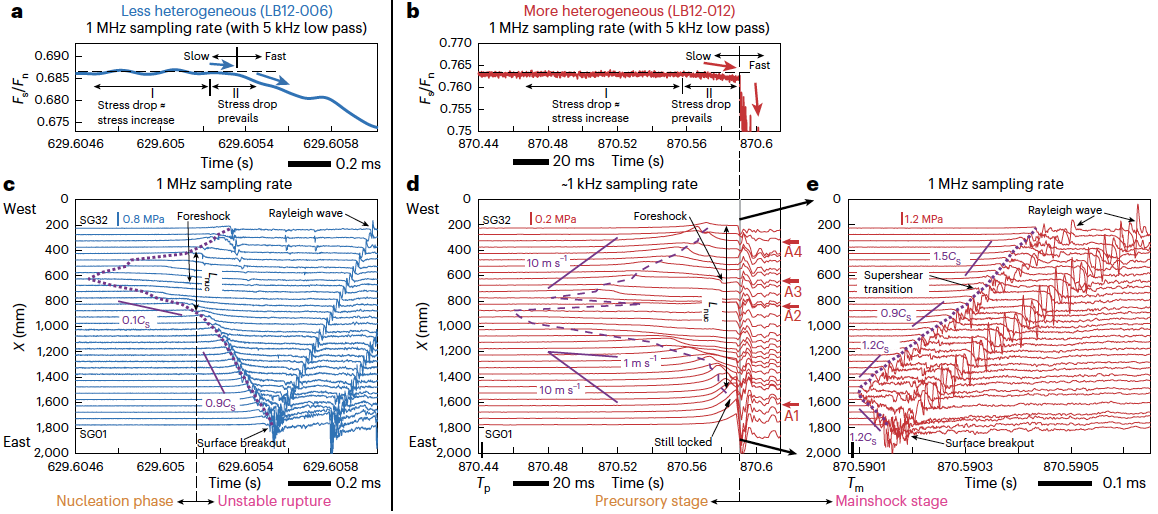Researchers reveal roles of fault surface topography during simulated earthquake cycles along meter-scale laboratory faults
2023-01-09
Natural faults are rough due to wearing, erosion, non-uniform stress loading, and other conditions. Understanding the impacts of fault surface roughness on fault strength and earthquake hazard is always at the forefront of earthquake science. While natural observations can provide some insights into the roles of fault surface roughness, a comprehensive understanding is still impeded due to the infrequent occurrence of large earthquakes and the limited access to natural fault zones.

Assistant Professor Shiqing Xu from the Department of Earth and Space Sciences at the Southern University of Science and Technology (SUSTech) led a collaborative research work that reveals the roles of fault surface topography during simulated earthquake cycles along meter-scale laboratory faults (Fig. 1 and Fig. 2a).
The results were recently published in Nature Geoscience, entitled “Fault strength and rupture process controlled by fault surface topography”.

Figure 1. The meter-scale rock friction apparatus installed at the National Research Institute for Earth Science and Disaster Resilience (NIED), Tsukuba, Japan
The researchers prepared two laboratory faults contrasted by the degree of surface topographic heterogeneity (Fig. 2b), which were respectively referred to as the less and more heterogeneous faults. Their results show that the more heterogeneous fault tends to have a higher macroscopic peak strength, produce a smaller stress drop on average, and display a shorter recurrence interval of stick-slip events than the less heterogeneous fault (Fig. 2c). These macroscopic observations are consistent with the characteristics of the local stress field, which show shorter-wavelength fluctuation and higher average value on the more heterogeneous fault (Fig. 2d).

Figure 2. Experimental setup, geometric and mechanical features of the two faults
Further observations illustrate that rupture evolution on the less heterogeneous fault is relatively simple. There is a smooth transition from the nucleation stage to the unstable propagation stage, and the rupture speed usually remains in the subshear regime (that is, below the S wave speed) (Fig. 3c). By contrast, rupture evolution on the more heterogeneous fault is more complex, featured by halted rupture propagation at the end of the precursory stage (Fig. 3d) and intermittent rupture propagation during the mainshock stage (Fig. 3e). What is more striking is that the same fault can sequentially experience a variation of rupture speed over four orders of magnitude (Fig. 3d, e), where episodes of supershear rupture (whose propagation speed is above the S wave speed) are clearly observed during the mainshock stage (Fig. 3e).
Based on several other types of observations, the researchers propose that the degree of fault surface topographic heterogeneity can affect the state of fault coupling during the inter-seismic period. On the less heterogeneous fault, there is only one patch that can be critically stressed before a rupture. Therefore, the average shear stress level is low, making the fault weak at the macroscopic scale, and the rupture tends to propagate at the subshear speed.
On the more heterogeneous fault, there are multiple patches that can be nearly critically stressed before a rupture, which translates into a strong fault at the macroscopic scale. The rupture process on the more heterogeneous fault depends on the degree of perturbation during rupture initiation. If the perturbation is small, then the rupture process can easily be terminated by the neighboring stress and strength heterogeneity. However, if the perturbation is large enough, then sustained rupture propagation can become possible.

Figure 3. Representative rupture behaviors on the two faults
These results provide valuable insights into how and why fault topographic heterogeneity affects fault strength and rupture process. They indicate that, over a sequence of earthquake cycles, rough faults, rather than smooth faults, are more likely to host supershear ruptures, which has important implications for (re-)assessing earthquake hazards.
Asst. Prof. Shiqing Xu at SUSTech is the lead and corresponding author of the work. Other co-authors include Prof. Eiichi Fukuyama from Kyoto University, Drs. Futoshi Yamashita and Shigeru Takizawa from the National Research Institute for Earth Science and Disaster Resilience (NIED), Prof. Hironori Kawakata from Ritsumeikan University, and Dr. Kazuo Mizoguchi from the Central Research Institute of Electric Power Industry.
This study was supported by National Natural Science Foundation of China (NSFC), National Key R&D Program of China, NIED, and Japan Society for the Promotion of Science (JSPS) KAKENHI.
Paper link: https://doi.org/10.1038/s41561-022-01093-z




